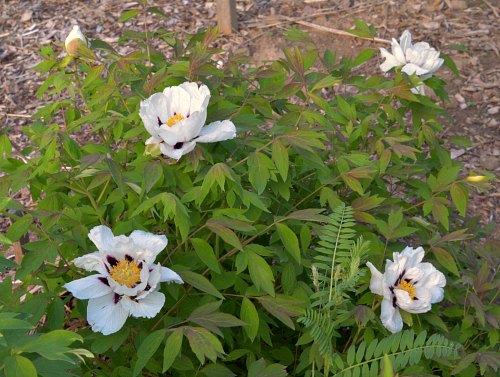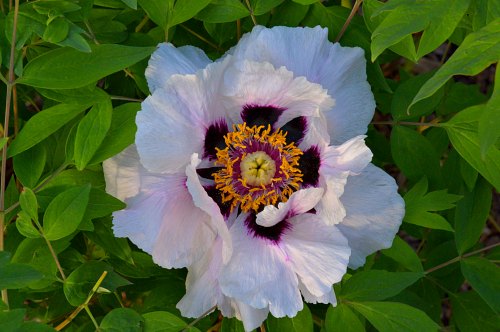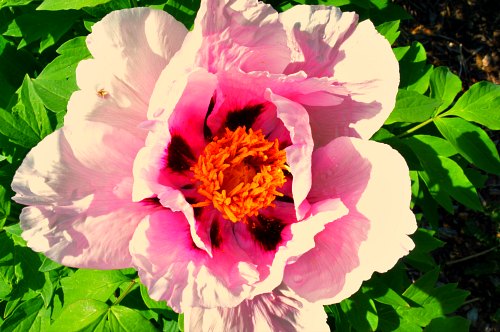Plant of the Month for December, 2016

(pay-OHN-ee-uh ROK-ee-eye)
General Information:
Paeonia rockii is a lovely tree peony that should be grown more. It can be difficult to find in a nursery, but those specializing in peonies will have it. The ones pictured here were grown from seed obtained from our Seedex program. The flowers are mostly white or light pink with dark maroon basal flares on the petals. There is some variation in flower form and coloration. One seedling from this group has red leaves in early summer.

Paeonia rockii:photo by Robert Pavlis
The common name, tree peony, describes the woody stems that are produced, but it is probably more correct to call these shrubs, not trees. They do not need staking.
Growing peonies from seed is very rewarding but does take some patience. It can easily take 5 years for Rock’s peony to flower, but it is worth the wait. Tree peonies can also be propagated by grafting a tree peony bud onto an herbaceous peony root. This is how most tree peonies are produced for the trade. Grafted plants may sprout new shoots from the herbaceous root and these need to be removed as soon as they are spotted. The leaves of tree peonies and herbaceous peonies look quite different once they grow next to each other.

Paeonia rockii, white form:photo by Robert Pavlis
In zone 5, tree peonies seem to have some die back each year. Wait until new buds are expanding and then remove dead tips off branches.
Click this link to find out more about germinating peony seeds.

Paeonia rockii, pink form:photo by Robert Pavlis
Life Cycle: shrub
Height: 180cm (6 ft)
Bloom Time: spring
Natural Range: China
Habitat: deciduous forests, forest margins, shady slopes, limestone rocks, 1100-2800 m
Synonyms: Paeonia suffruticosa subsp rockii, Paeonia linyanshanii
Cultivation:
Light: part shade to shade, can take full sun in colder regions
Soil: well drained, humusy
Water: average
USDA Hardiness Zone: 4 – 9 (survives in colder zones but will die back to ground)
Propagation: seed, grafting
Seedex availability (ORG&HPS annual Seed Exchange): frequently
